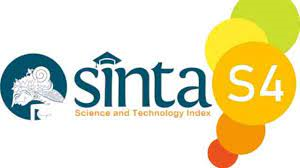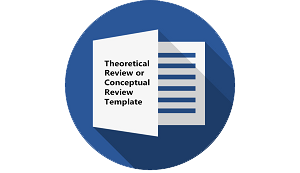Exploring Perception of EFL Teachers towards Use of Media in Teaching English
DOI:
https://doi.org/10.30957/ijoltl.v5i1.613Keywords:
EFL teacher, Perception, and MediaAbstract
This Research is against the backdrop of demand in mastering English. EFL teacher becomes one of the main important parts of teaching-learning English to handle a certain role in maximal the students’ achievement. The students’ achievement here means not only someone that has a lot of knowledge and high value but also someone that can give a positive contribution to other people. Because of that, the teachers have a big responsibility to facilitate students in learning. One of the facilitation of teaching-learning that has to be prepared by teachers is media. This study aims to investigate the teachers’ perceptions of ELT media. This study is classified into three main dimensions of perception proposed by Vernon (1987) namely understanding, outlook and action. By conducting a survey study, the researcher collected, analyzed, elaborated and eventually drew conclusions dealing with the teachers’ perceptions of ELT media. The main data of this study were collected with an interview and a questionnaire, which was distributed to 29 English teachers in the city of Tulungagung. The findings showed that Media is able to be a benefit for both teachers and students, be applicable to every class. To select criteria of Media is based on Media Mastery or flexibility due to different reference and less facility. Besides that, The teachers have positive responses towards the two of the dimensions, understanding, and view. The teachers, however, do not show positive responses toward the action. However, in general, the English teachers’ perceptions of ELT media in this study were categorized as a good perception. In other words, all the teachers have a positive perception of ELT media.
Downloads
References
Amelia, R. (2015). Traditional media still exist in digital era: maximizing pictures in TEFL. English language education study program of Sanata Dharma University (pp. 241-248). Yogyakarta: English language education study program of Sanata Dharma University.
Ary, D., Jacobs, L. C., &Razavieh, A. (2002). Intorduction to research in education. New York: Wardsworth Thomson Learning.
Atkinson, R., & Hilgard, E. R. (1999). Pengantarpsikologi. Jakarta: Erlangga.
Bellani, S. (2011, May 21st). The advantages of using flashcard in learning. Retrieved May 2nd, 2016, from Ezine Articles:
Boore, G. C. (2012, December 8th). Perception and interaction. Shippenburg, Pennsylvania, USA. Retrieved from Discover psychology.
Bradley, B. (2002). Psychology and experience. Cambridge: Cambridge University Press.
Brown, H. D. (2000). Principles of Language and Teaching. New York: Addison Wesley Longman, Inc.
Chan, W. M., Chin, K. N., Nagami, M., &Suthiwan, T. (2011). Media in foreign language teaching and learning. Chicago: Walter de Gruyter. [12]Chaplin, J. P. (1968). Dictionary of psychology. New York: Dell Publishing Co. Inc.
Clark, R. E. (1994). Media will never influence learning. Boston: Heinle & Heinle.
Corporation for Public Broadcasting. (2004). Television goes to school: the impact of video evaluation.
Dale, E. (1969). Audiovisual method in teaching. New York: The Dryden Press.
Danil, D. Upaya Profesionalisme Guru Dalam Meningkatkan Prestasi Siswa di Sekolah (Study Deskriptif Lapangan di Sekolah Madrasah Aliyah Cilawu Garut). Vol. 03; No. 01; 2009; 30-40.
Dretske, F. (1988). Explaining behavior. Cambridge, MA: MIT Press.
Dwijatmoko, B. B. (2015). Indonesian English teachers' readiness for ICT use. Teaching and Assessing L2 Learners in the 21st Century (pp. 686-693). Denpasar: Faculty of Letters and Culture, Udayana University.
Eunice Rugut and Jesse Role. (2013). Teachers and Students Perceptions on the Utilisation of Educational Media in Teaching and Learning History and Government in Secondary Schools in Kenya. International Journal of Science and Research (IJSR) ISSN (Online): 2319-7064 Index Copernicus Value
Fachrurrazy. (2011). Teaching English as a foreign language for teachers in Indonesia. Malang: State University of Malang Press.
Hamalik, O. (1994). Media Pendidikan. Bandung: PT. Aditya Bakti.
Hambrook, J. (1979). Television materials for ELT. In T. B. Council, The use of media in English language teaching (pp. 24-30). London: The British Council Printing and Publishing Department.
Harmer, J. (2001). The practice of English language teaching. Harlow: Pearson Education.
Harmer, J. (2007). How to teach English. Essex: Pearson Education Limited.
Harsono, Y. M. (2006). English language teaching in Indonesia: facts, problems and possible solution. English education journal, 5 (2).
Heinich, R., Molenda, M., & Russell, J. D. (1982). Instructional media and the new technologies of instruction. New York: John Wiley & Sons.
Howse, H. (1979). BBC English by radio and television: an outline history. In T. B. Counsil, The use of media in English language teaching (pp. 15-23). London: The British Counsil Printing and Publishing Department. Ip, Y. K. (2003). Knowing is not the same as understanding: what is understanding? Retrieved December 8th, 2012, from Successful Learning: http://www.cdtl.nus.edu.sg/success/sl20.htm
http://ezinearticles.com/?The-Advantages-of-Using-Flashcards-in- Learning&id=6288984
Ismaili, M. (2013). The effectiveness of using films in the EFL classroom: a study conducted at South East European University. Academic Journal of Interdisciplinary Studies, 121-132.
Kabooha, R. H. (2016). Using films in EFL classroom: a study conducted at the English Language Institute (ELI). Journal of English Language Teaching, Vol. IX (No. 3), 248-257.
Kachru, B. B. (1992). The Other Tongue: English across cultures. Urbana: University of Illionis Press.
Kasihani, K. E. (2000). Pengembangan kurikulum Bahasa di Indonesia. The National Convention of Indonesia Education, 19-22.
Königs, F. G. (1999). To know English or not to knw English. Tumbingen: Stauffenburg Verlag.
Lodico, M. G., Spaulding, D. T., &Voegtle, K. H. (2006). Method in educational research. San Fransisco: Jossey-Bass.
Mardapi, D. (2008). Teknik penyusunan instrument tes dan nontes. Yogyakarta: Mitra Cendekia Press.
McNamara, J. F. (1994). Survey and Experiments in education research. Lancaster PA: Technomic Publishing.
Morris, B. (1962). The function of media in the public schools. Audiovisual Instruction, 8 (9), 9–14.
Munadi, Y. (2010). Media Pembelajaran; Sebuah Pendekatan Baru. Jakarta: Gaung Persada Press.
Murphey, T. (1992). Music and Song. Oxford: Oxford University Press.
Newby, T. J., Stepich, D. A., Lehman, J. D., & Russel, J. D. (1996). Instructional technology for teaching and learning: designing instruction, integrating computers, and using media. Upper Saddle River: Pearson Education.
Pun, M. (2013). The use of multimedia technology in English language teaching: a global perspective. International Journal of Interdisciplinary Studies, 29-38.
Ramsey, F. H. (1986). The little brown handbook. Boston: Little Brown.
Rao, B. M. (2014). Use of media as an instructional tool in English Language Teaching at undergraduate level. International Journal of English and Literature, Vol. V (No. 6), 141-143.
Riduan. (2009). Dasar-Dasar Statisktika. Bandung: Alfabeta.
Romiszowski, A.J. (1998). The Selection and use of Instructional Media. London: Kogan Page.
Sadiman, A. S., Rahardjo, R., Haryono, A., & Rahardjito. (2009). Media pendidikan: pengertian, pengembangkan, dan pemanfaatannya. Jakarta: Rajawali Press.
Sedarmayanti (2001). Audio visual media and English learners. International journal on recent and innovation trends in computing and communication, Vo. 2 (No. 2), 384-386.
Silcha, W. N., &Ivone, F. M. (2015). Using facebook with process writing strategy to enhance the teaching of recount text. English Language Education Study Program Sanata Dharma University (pp. 391-399). Yogyakarta: English Language Education Study Program Sanata Dharma University.
Smaldino, S. E., Lowther, D. L., & Russell, J. D. (1996). Instructional technology and media for learning. Boston: Pearson Education Inc.
Soedijarto (1991) Media pembelajaran interaktif-inovatif. Yogyakarta: Kaukaba Dipantara.
Soko (2017). Using English songs: an enjoyable and effective approach to ELT. CCSE English Language Teaching Journal, 88-94.
Stewart, D. M. (2006). Film English: using film to teach English. Electronis Journal of English Education, 1-17.
Sukidjo (2003). English for young learners. Jakarta: PT. BumiAksara.
Tafani, V. (2009). Teaching English through mass media. Acta Didactica Napocensia, Vol. 2 (No. 1), 81-96.
Taiwo, S (2002). Teachers' perception of the role of media in classroom teaching in secondary schools. in Turkish Online Journal of Educational Technology.
Tomalin, B. (1979). Using BBC English by radio and television in the classroom. In T. B. Council, The use of media in English language teaching (pp. 68- 74). London: The British Council Printing and Publishing Department.
Tschirner, E. (2011). Video clips, input processing and language learning. In W. M. Chan, K. N. Chin, T. Suthiwan, & M. Nagami, Media in foreign language teaching and learning (pp. 25-40). Berlin: De Gruyter Mouton.
Usman Uzer, 1998. Menjadi Guru Fropesional. Bandung: RemajaRosdakarya.
Vernon, M. D. (1987). The psychology of perception. Middlesex: Penguin Books.
Wang, Y., & Zhang, H. F. (2012). The application of English films in higher vocational English teaching. Journal of Sino-US English Teaching, 1010- 1014.
Wells, G. (1987, March). Apprenticeship in Literacy. Interchange, pp. 109-123.
Wiersma, W. (1995). Research method in Education: an introduction. New York: Allyn and Bacon.
Wigginss, G. (1998). Educative assessment. San Fransisco: Jossey-Bass Publisher.
Wilson, G. (2012, April 4th). Action. Retrieved October 17, 2012, from Stanford encyclopedia of philosophy: https://plato.stanford.edu/entries/action/
Woolfolk, A. E. (1998). Educational psychology. Boston: Allyn& Bacon.
Downloads
Published
How to Cite
Issue
Section
License
Authors who publish with this journal agree to the following terms:
- Authors retain copyright and grant the journal right of first publication with the work simultaneously licensed under a Creative Commons Attribution-ShareAlike 4.0 International License that allows others to share the work with an acknowledgement of the work's authorship and initial publication in this journal.
- Authors are able to enter into separate, additional contractual arrangements for the non-exclusive distribution of the journal's published version of the work (e.g., post it to an institutional repository or publish it in a book), with an acknowledgement of its initial publication in this journal.
- Authors are permitted and encouraged to post their work online (e.g., in institutional repositories or on their website) prior to and during the submission process, as it can lead to productive exchanges, as well as earlier and greater citation of published work (See The Effect of Open Access).












